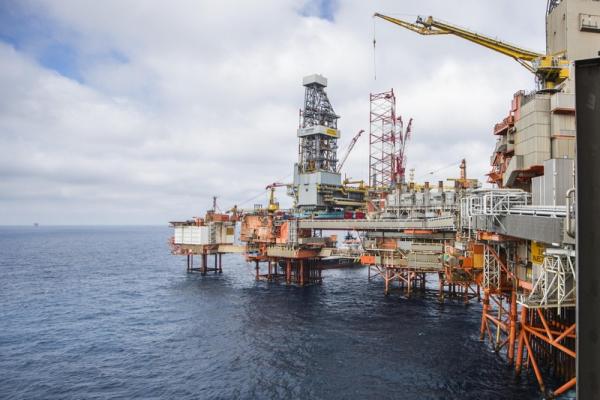(Repeats item published earlier with no changes in text. The
opinions expressed here are those of the author, a columnist for
Reuters.)
By Clyde Russell
LAUNCESTON, Australia, March 9 (Reuters) - Saudi Arabia has
detonated a metaphorical nuclear weapon in the global oil
market, blowing up prices and trade relationships with its
decision to slash the cost of its own crude while ramping up
output.
The Saudi move was no shot across the bows aimed at Russia's
reluctance to extend and boost a deal to curb production.
Instead, it was a full-on declaration of war.
Saudi Aramco 2222.SE aims to lift its output above 10
million barrels per day (bpd) in April, possibly as high as 11
million bpd, two people with knowledge of the matter told
Reuters on March 8. Given its current output is around 9.7 million bpd, this
means as much as an extra 1.3 million bpd could flood the market
next month - just as demand is taking a major hit from the
economic fallout of the global coronavirus epidemic.
But pumping more oil was only one of the two barrels fired
by the Saudis. The other was a massive cut to their official
selling prices (OSPs) for April.
Saudi Aramco prices its crude against various benchmarks for
the different regions it supplies. While the exact formula isn't
disclosed, the price moves generally reflect a combination of
demand by refiners in each of the main consuming regions of
Asia, Europe and North America, as well as movements in the
benchmarks.
But the collapse of talks between OPEC and its allies on
March 6 prompted a huge cut to the Saudi OSPs, much more than
what was justified by even the current weakness in demand from
refiners.
The OSP for Saudi Aramco's benchmark Arab Light grade was
cut by $6 a barrel for Asian customers, the destination of about
two-thirds of the kingdom's exports. This was the largest
monthly cut in Refinitiv records stretching back to 2003.
The OSP was cut to a discount of $3.10 a barrel to the
Oman/Dubai average for April, down from a premium of $2.90 for
March cargoes.
It wasn't just Asian refiners getting a massive price cut.
The Saudis slashed the Arab Light OSP for Northwest Europe by $8
a barrel to a discount of $10.25 a barrel to Brent, and the
United States got a reduction of $7 a barrel to a discount of
$3.75 against the Argus Sour Crude Index.
SAUDI MESSAGING
When OPEC and its allies, including Russia, failed to agree
to extend their output cut of 2.1 million bpd, which expires at
the end of this month, or agree a further 1.5 million bpd
reduction, it was always likely the Saudis would take action.
The prevailing logic was that the Saudis wanted to send a
message to Russia: Extending and increasing output restrictions
would have been a good idea, and that it would have been in all
the producers' interests to make this happen.
But there was nothing subtle in the eventual Saudi actions -
the largest cut to the OSP in at least three decades and a
threat to deluge an already swamped oil market.
Other Middle Eastern producers such as Kuwait, Iran and Iraq
will have little choice but to match the Saudi price cuts, as
will other exporters around the world, unless they are prepared
to lose market share or shut-in wells.
It may also be the case that Saudi Arabia has more than just
a lesson for Russia in mind. It may also be trying to curtail
U.S. shale oil output, hoping price weakness forces producers
into losses and the idling of drilling rigs.
The evidence that this will work is patchy, with the price
collapse in 2014 seen as a failed attempt to crush shale
producers, one that ultimately led to the OPEC and allies
agreement.
While the output restrictions, agreed by OPEC and allies in
November 2016 and implemented from the start of 2017, may not
have delivered significantly higher prices, it did stabilise the
market in a fairly broad range around $60 a barrel.
PRICES IN FREEFALL
The initial reaction to the Saudi gambit saw prices in
freefall, collapsing to the lowest in four years. Brent futures
LOCc1 tumbled as much as 31% in early Asian trade on Monday to
a low of $31.02 a barrel, before recovering slightly to trade
around $36.
While refiners will cheer the lower oil costs as helping
their margins amid coronavirus-hit fuel demand due, it also
creates some dilemmas for them.
Chinese refiners will be mindful that they are supposed to
be buying huge volumes of U.S. crude as part of undertakings in
the recent trade truce between Beijing and Washington.
That hasn't happened so far. While the coronavirus outbreak
can take some of the blame, that excuse will no longer wash as
China finally looks to have made some domestic breakthroughs in
containing the epidemic.
What still has to become clear is what do crude oil
exporters do in response to the Saudi action, beyond the
short-term move of also cutting prices?
Also, will importers actually buy more crude, or switch
their supplier mix in response to cheaper oil? The coronavirus
is still hitting demand and it's likely that storage tanks will
soon be filling up, with only China likely in a situation where
it can meaningfully add to its strategic inventories.
(Editing by Kenneth Maxwell)
